Juvinele
Symbiote
Death’s Grasp
This multi-organism apex predator is named after the way it skewers its prey with its long and flexible tails. Death’s Grasp and its symbiote have completely different genetics, yet from birth grow and work together as if one.
A primarily gaseous body allows Death’s Grasp to effortlessly drift above the sheer cliffs of its environment, with the membrane between its tentacles acting as wings. If Death’s Grasp needs to dive, it dissipates some of the gas through its permeable body.
Once a meal is caught, Death’s Grasp will brace itself on a cliff side and draw it to the blind Symbiote. Its rudimentary arms hold food in place as it slowly breaks it down with acid from its mouth. Nutrients are shared between the organisms through blood vessels located at the Symbiote’s “eye” cavities.
Death’s Grasp reproduces asexually. It flies down the mountains to bodies of calm water. Juveniles have amphibious lifestyles and cannot fly until they’ve matured. Their underdeveloped tails aren’t as lethal, but can leave painful gashes on intruders.
Behavior: silent; constantly flying except for feeding & resting
Diet: carnivorous
Habitat: mountains
Intelligence: pure instinct (main body); unkown (Symbiote)
Body is comprised of unknown gas.
Size comparison
Concept Evolution
2014
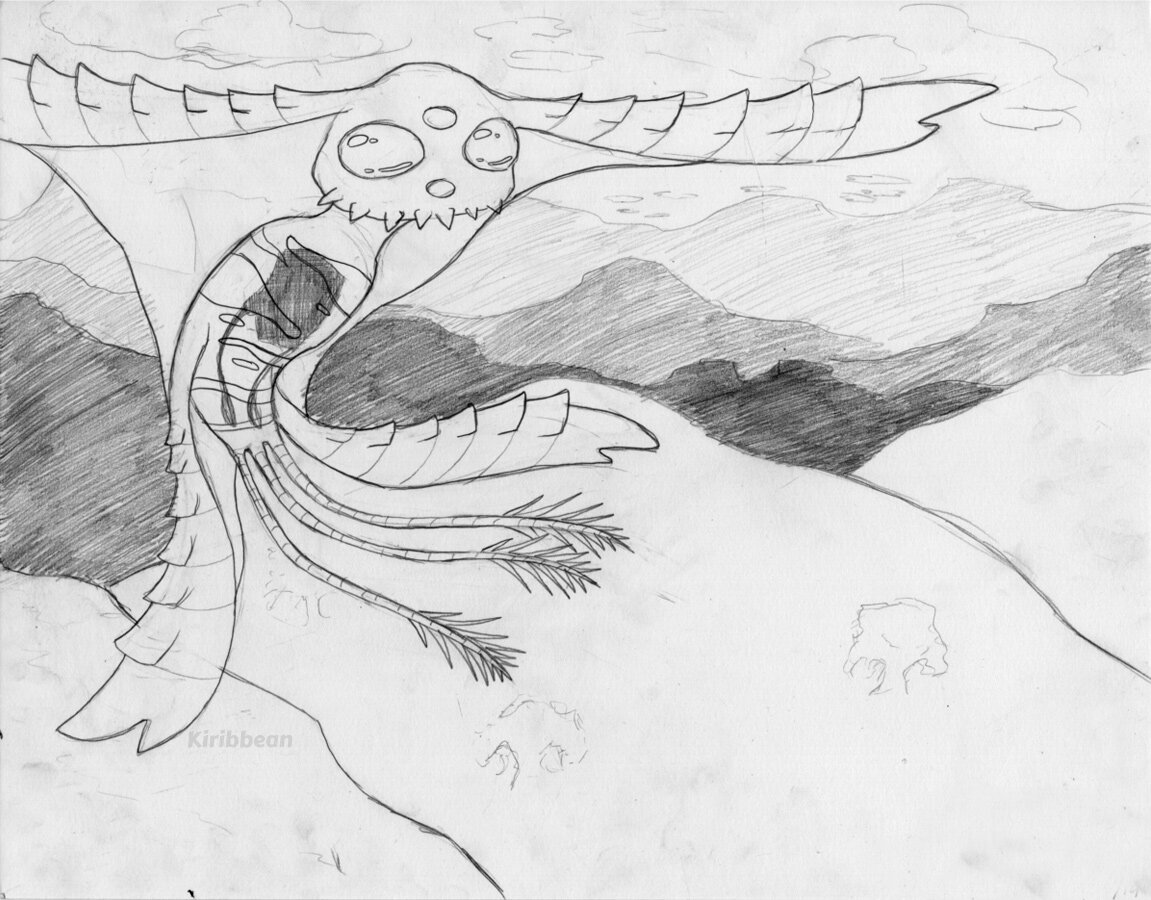
This was another character built during a class project. In the earliest drawings, its tentacles are shorter, and the spikes situated on bottom of its head.
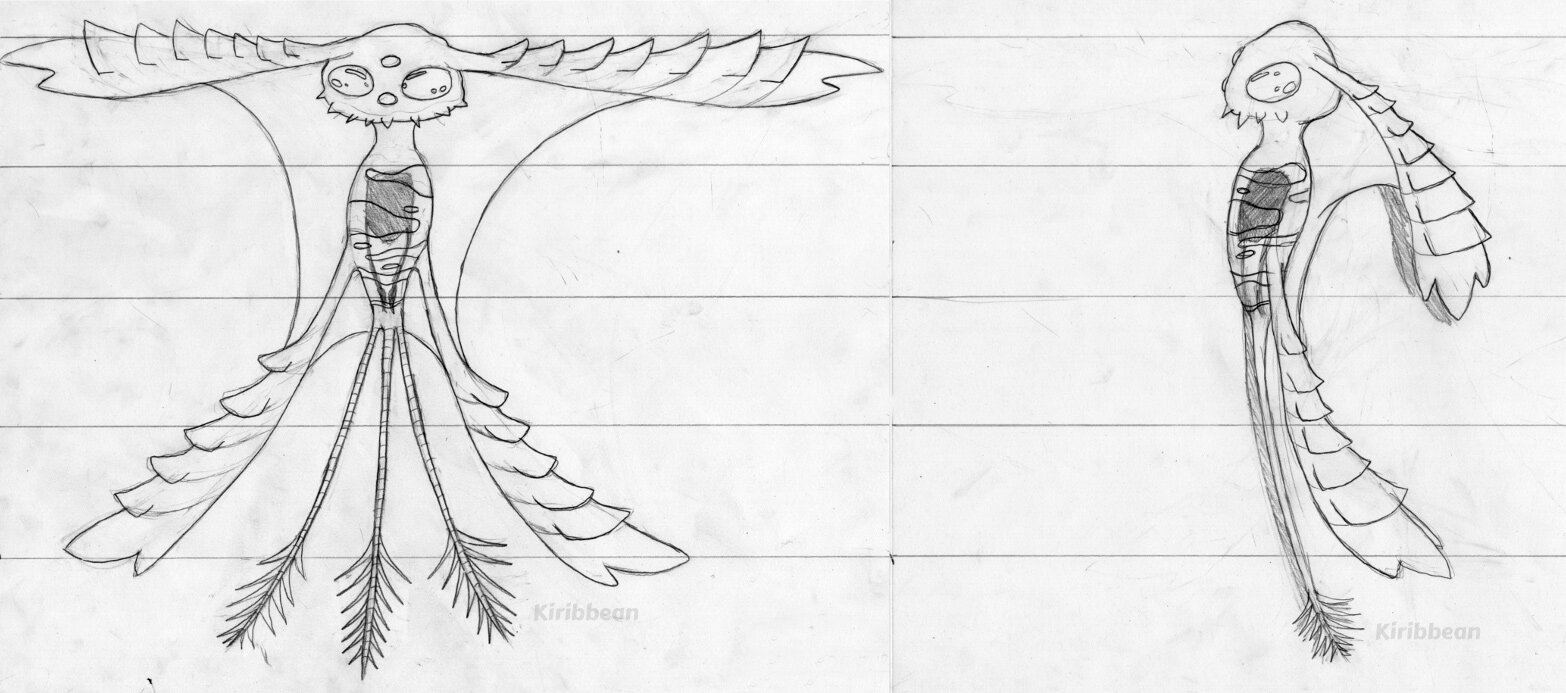
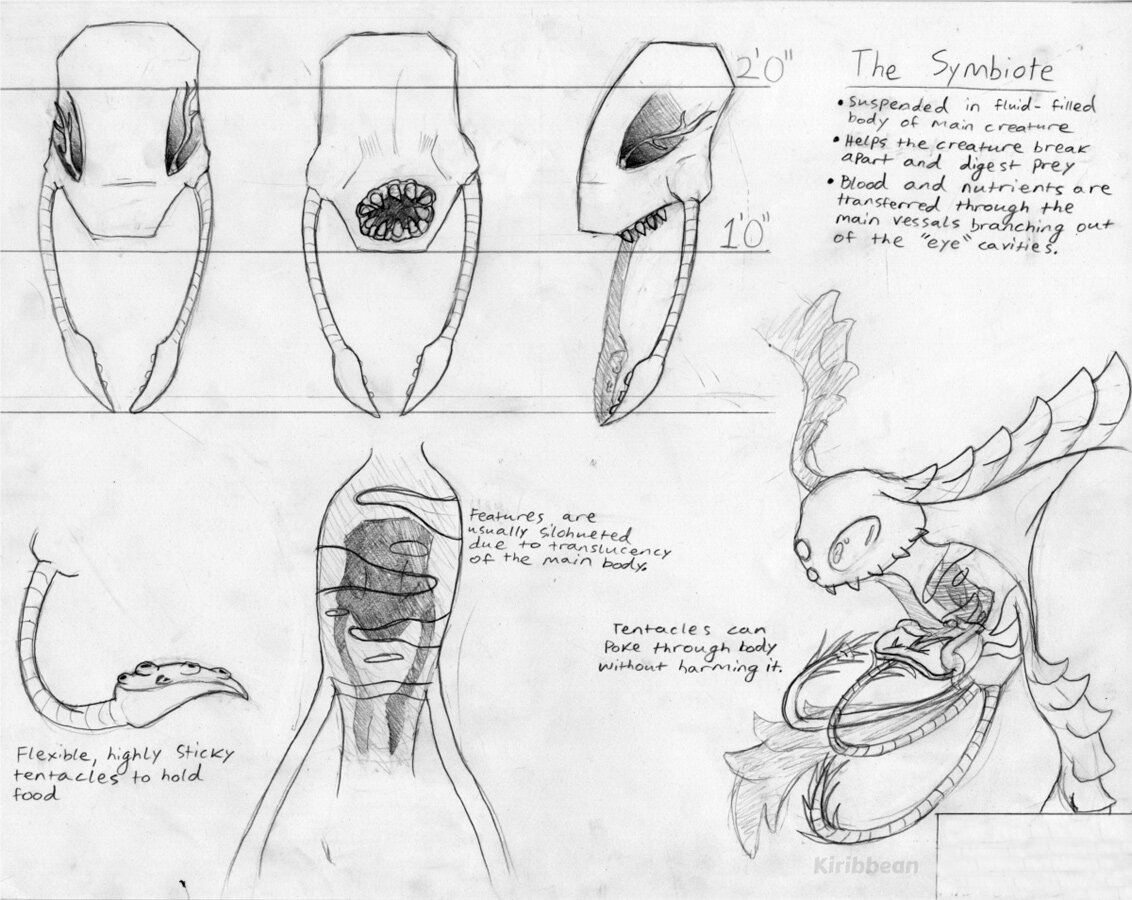
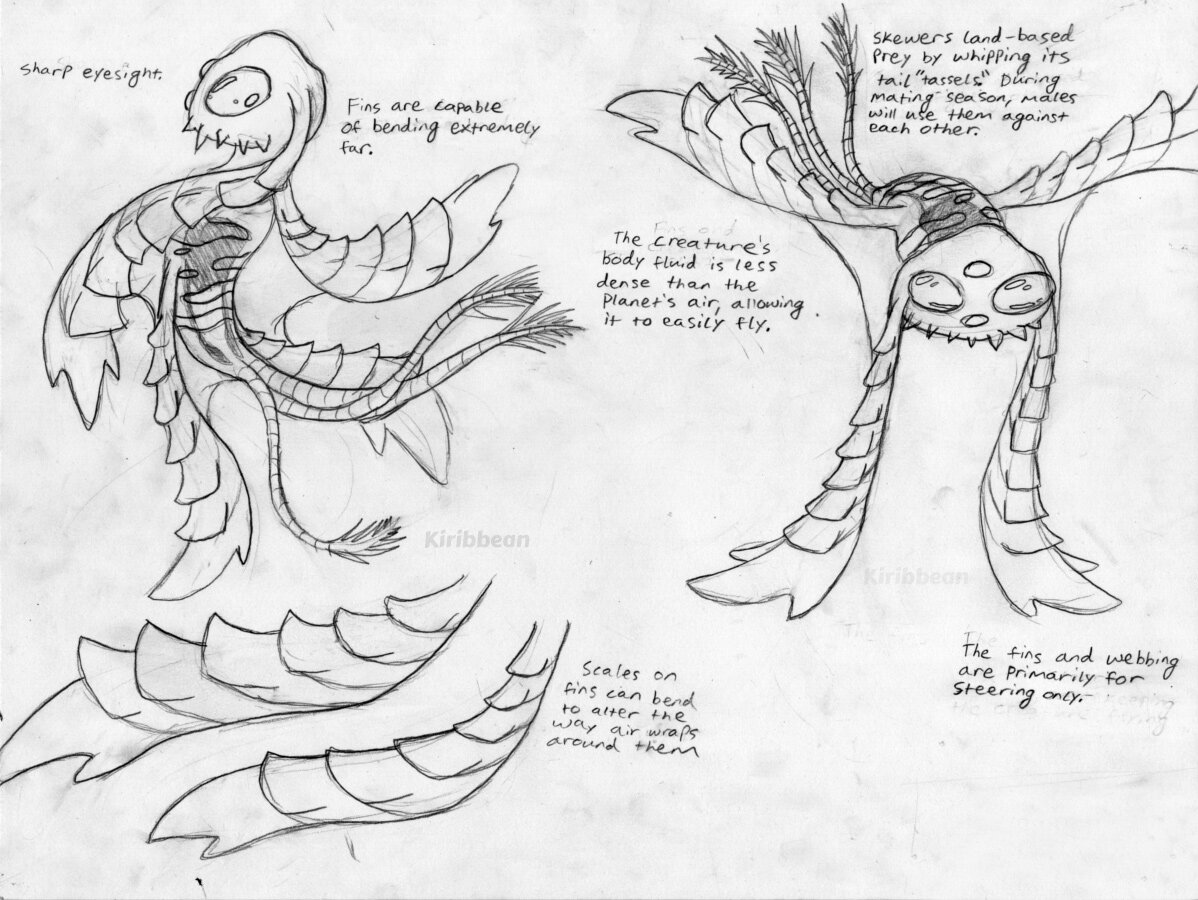
I don't remember giving Death's Grasp a male/female dichotomy. I've long since rewritten this lore.

For another college assignment, Death's Grasp is featured on the cover of a mock field guide.
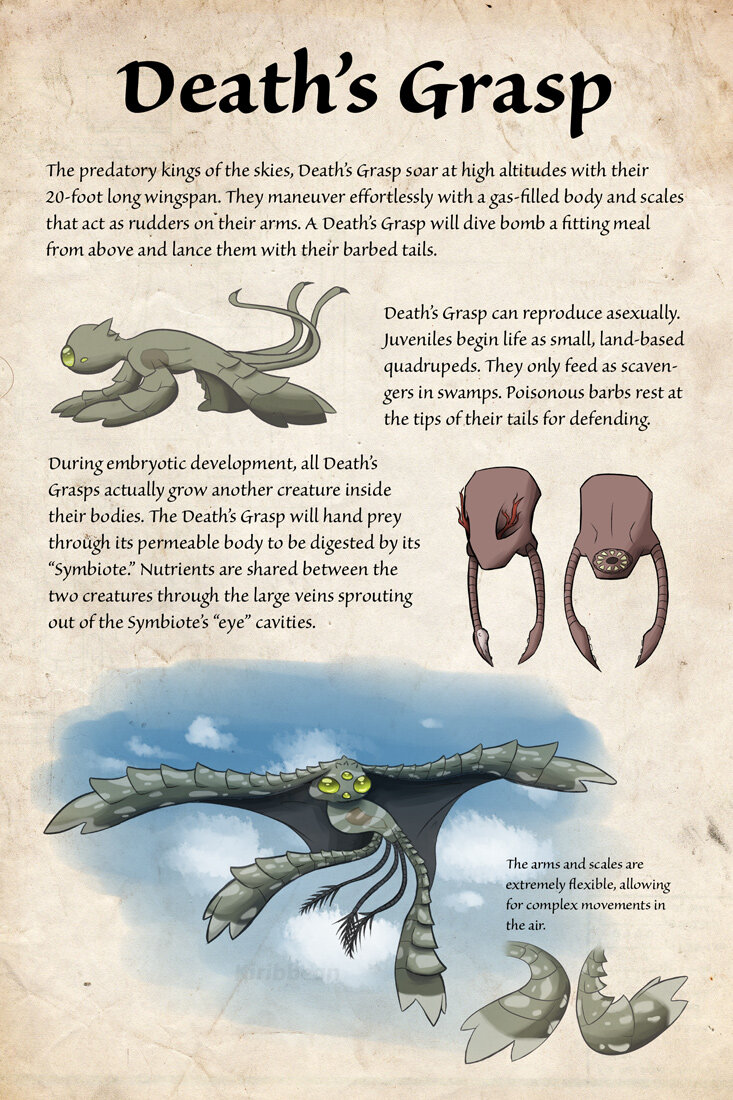
One of the field guide's pages. I've fine-tuned the design by this point.


